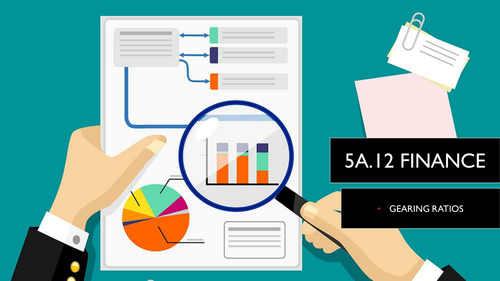105Uploads
22k+Views
8k+Downloads
Business and finance

[Chinese Keywords] [Updated 2019] CIE GCSE Business 0450 Unit 4 Production
These slides are not sorted into individual lessons, allowing you to pace lessons based on the ability of your classroom.
This is the recently updated 2019 version of the resource. It has Chinese keywords and Chinese help and has been specially produced for teaching Chinese students of all abilities.
These presentations aim to cover all of the syllabus points pertinent to CIE GCSE Unit 4 Production, they reference page numbers and activities found in the core textbook suggested by CIE.
This resource pack is not a substitute for experienced teaching, a thorough understanding of the syllabus and individual needs of the classroom, but I hope that these can save you time and give you some ideas to work from.

中文/英文 CIE 0450 Economics Case Study Poverty, Unemployment and Palm Oil 贫困,失业与棕榈油
This pack is designed for those working in International Schools in China and helps reinforce key economics themes and their interrelationships. It is suitable for English only speakers and English-Mandarin bilinguals.
Themes include:
Poverty
Unemployment
Natural resource use within the context of Indonesia’s Palm Oil industry.
A set of Powerpoint Slides (with Mandarin keywords), 3 short videos, and a translation activity are contained within the pack, allowing for a full lesson and homework.

9609 CIE A Level Business Unit 1A Business and Environment
These presentations aim to cover all of the syllabus points pertinent to CIE A Level Business Unit 1, they reference page numbers and activities found in the core textbook suggested by CIE.
These presentations are not a substitute for experienced teaching and a thorough understanding of the syllabus and individual needs of the classroom, but I hope that these can save you time and give you some ideas to work from.

9609 [Updated 2020] CIE A2 Level Business Unit 3 Marketing
These presentations aim to cover all of the syllabus points pertinent to CIE A Level Business Unit 3 - Marketing, they reference page numbers and activities found in the core textbook suggested by CIE.
The following topics are covered in varying levels of detail:
3.1 What is marketing? :no content beyond Cambridge International AS Level.
3.2 Market research :no content beyond Cambridge International AS Level.
3.3 The marketing mix :no content beyond Cambridge International AS Level.
3.4 Marketing planning
3.4.1 Market planning
3.4.2 Elasticity
3.4.3 Product development
3.4.4 Forecasting
3.4.5 Coordinated marketing mix
3.5 Globalisation and international marketing
3.5.1 Globalisation
3.5.2 Strategies for international marketing
These presentations are not a substitute for experienced teaching, a thorough understanding of the syllabus and individual needs of the classroom, but I hope that these can save you time and give you some ideas to work from.

9609 CIE A2 Level Business Unit 4 - Operations
These presentations aim to cover all of the syllabus points pertinent to CIE A2 Level Business Unit 4 - Operations, they reference page numbers and activities found in the core textbook suggested by CIE.
The following topics are covered in varying levels of detail:
4.1. The nature of operations: No content beyond Cambridge International AS Level.
4.2 Operations planning
4.2.1 Enterprise resource planning (ERP)
4.3 Inventory management: No content beyond Cambridge International AS Level.
4.4 Capacity utilisation
4.4.1 Measurement and significance of capacity
4.4.2 Increasing capacity utilisation
4.4.3 Outsourcing
4.5 Lean production and quality management
4.5.1 Lean production
4.5.2 Kaizen
4.5.3 Just in Time (JIT)
4.5.4 Quality control and assurance
4.5.5 Total Quality Management
4.5.6 Benchmarking
These presentations are not a substitute for experienced teaching, a thorough understanding of the syllabus and individual needs of the classroom, but I hope that these can save you time and give you some ideas to work from.

9609 CIE A2 Level Business Unit 2A Human Resources
These presentations aim to cover all of the syllabus points pertinent to CIE A2 Level Business Unit 2, they reference page numbers and activities found in the core textbook suggested by CIE.
These presentations are not a substitute for experienced teaching, a thorough understanding of the syllabus and individual needs of the classroom, but I hope that these can save you time and give you some ideas to work from.
Bundle

2020 iGCSE 0450 CIE IB MASSIVE Business Studies Bundle, All Modules
A bundle of resources that cover modules 1-6 of the CIE Business Syllabus - which will also cover most of the IB syllabus too.
Includes Chinese keywords at points, these can be removed if required.
Syllabus points covered:
Understanding business activity
1.1 Business activity 1.1.1 The purpose and nature of business activity:
• Concepts of needs, wants, scarcity and opportunity cost
• Importance of specialisation
• Purpose of business activity
• The concept of adding value and how added value can be increased
1.2 Classification of businesses 1. 1.2.1 Business activity in terms of primary, secondary and tertiary sectors:
o Basis of business classification, e.g. by using examples
o Reasons for the changing importance of business classification, e.g. in developed and developing economies
1.2.2 Classify business enterprises between private sector and public sector in a mixed economy
1.3 Enterprise, business growth and size 1. 1.3.1 Enterprise and entrepreneurship:
o Characteristics of successful entrepreneurs
o Contents of a business plan and how business plans assist entrepreneurs
o Why and how governments support business start-ups, e.g. grants, training
1.3.2 The methods and problems of measuring business size:
o Methods of measuring business size, e.g. number of people employed, value of output, capital employed (profit is not a method of measuring business size)
o Limitations of methods of measuring business size
1.3.3 Why some businesses grow and others remain small:
o Why the owners of a business may want to expand the business
o Different ways in which businesses can grow
o Problems linked to business growth and how these might be overcome
o Why some businesses remain small
1.3.4 Why some (new or established) businesses fail:
• Causes of business failure, e.g. lack of management skills, changes in the business environment
• Why new businesses are at a greater risk of failing
1.4 Types of business
organisation 1.4.1 The main features of different forms of business organisation:
• Sole traders, partnerships, private and public limited companies, franchises and joint ventures
• Differences between unincorporated businesses and limited companies
• Concepts of risk, ownership and limited liability
• Recommend and justify a suitable form of business organisation to owners/management in a given situation
• Business organisations in the public sector, e.g. public corporations
1.5 Business objectives and
stakeholder objectives 1. 1.5.1 Businesses can have several objectives – and the importance of these can change:
o Need for business objectives and the importance of them
o Different business objectives, e.g. survival, growth, profit and market share
o Objectives of social enterprises
1.5.2 The role of stakeholder groups involved in business activity:
o Main internal and external stakeholder groups
o Objectives of different stakeholder groups
o Use examples to illustrate these objectives and how they might conflict
1.5.3 Demonstrate an awareness of the differences in the aims and objectives of private sector and public sector enterprises
People in business
2.1 Motivating workers 1. 2.1.1 The importance of a well-motivated workforce:
o Why people work and what motivation means
o The concept of human needs – Maslow’s hierarchy
o Key motivational theories: Taylor and Herzberg
2.1.2 Methods of motivation:
o Financial and non-financial rewards and methods
o Recommend and justify appropriate method(s) of motivation in given circumstances
2.2 Organisation and
management 1. 2.2.1 Draw, interpret and understand simple organisational charts:
o Simple hierarchical structures: span of control, hierarchy, chain of command and delegation
o Roles, responsibilities and inter-relationships between people in organisations
2.2.2 The role of management:
o Functions of management – planning, organising, co-ordinating, commanding and controlling
o Importance of delegation; trust versus control
2.2.3 Leadership styles:
o Features of the main leadership styles – autocratic, democratic and laissez-faire
o Recommend and justify an appropriate leadership style in given circumstances
2.2.4 Trade unions:
What a trade union is and the benefits of workers being union members
2.3 Recruitment, selection and
training of workers 1. 2.3.1 The methods of recruiting and selecting workers:
o Recruitment and selection
o Difference between internal and external recruitment
o Main stages in recruitment and selection of staff
o Benefits and limitations of part-time and full-time workers
2. 2.3.2 The importance of training and the methods of training:
o Importance of training to a business and workers
o Benefits and limitations of induction training, on-the-job training and off-the-job training
3. 2.3.3 Why reducing the size of the workforce might be necessary:
o Difference between dismissal and redundancy with examples to illustrate the difference
o Understand situations in which downsizing the workforce might be necessary, e.g. automation or reduced demand for products
o Recommend and justify which workers to recruit/make redundant in given circumstances
4. 2.3.4 Legal controls over employment issues and their impact on employers and employees:
Legal controls over employment contracts, unfair dismissal, discrimination, health and safety, legal minimum wage
2.4 Internal and external
communication 1. 2.4.1 Why effective communication is important and the methods used to achieve it:
o Effective communication and its importance to business
o Benefits and limitations of different communication methods including those based on information technology (IT)
o Recommend and justify which communication method to use in given circumstances
2. 2.4.2 Demonstrate an awareness of communication barriers:
How communication barriers arise and problems of ineffective communication; how communication barriers can be reduced or removed
3.1 Marketing, competition and the customer 1. 3.1.1 The role of marketing:
o Identifying customer needs
o Satisfying customer needs
o Maintaining customer loyalty; building customer relationships
2. 3.1.2 Market changes:
o Why customer/consumer spending patterns may change
o The power and importance of changing customer needs
o Why some markets have become more competitive
o How business can respond to changing spending patterns and increased competition
3. 3.1.3 Concepts of niche marketing and mass marketing:
Benefits and limitations of each approach to marketing
3.1.4 How and why market segmentation is undertaken:
• How markets can be segmented, e.g. according to age, socio-economic grouping, location, gender
• Potential benefits of segmentation to business
• Recommend and justify an appropriate method of segmentation in given circumstances
3.2 Market research 1. 3.2.1 The role of market research and methods used:
o Market-oriented businesses (uses of market research information to a business)
o Primary research and secondary research (benefits and limitations of each)
o Methods of primary research, e.g. postal questionnaire, online survey, interviews, focus groups; the need for sampling
o Factors influencing the accuracy of market research data
2. 3.2.2 Presentation and use of market research results:
Analyse market research data shown in the form of graphs, charts and diagrams: draw simple conclusions from such data
3.3 Marketing mix 1. 3.3.1 Product:
o The costs and benefits of developing new products
o Brand image – impact on sales and customer loyalty
o The role of packaging
o The product life cycle: main stages and extension strategies; draw and interpret a product life cycle diagram
o How stages of the product life cycle can influence marketing decisions, e.g. promotion and pricing decisions
2. 3.3.2 Price:
o Pricing methods: cost plus, competitive, penetration, skimming and promotional; their benefits and limitations
o Recommend and justify an appropriate pricing method in given circumstances
o Understand the significance of price elasticity: difference between price elastic demand and price inelastic demand; importance of the concept in pricing decisions (knowledge of the formula and calculations of PED will not be examined)
3. 3.3.3 Place – distribution channels:
o Advantages and disadvantages of different channels
o Recommend and justify an appropriate distribution channel in given circumstances
4. 3.3.4 Promotion:
o The aims of promotion
o Different forms of promotion and how they influence sales, e.g. advertising, sales promotion
o The importance of the marketing budget in making promotion decisions; need for cost effectiveness in spending the marketing budget
5. 3.3.5 Technology and the marketing mix:
o Define and explain the concept of e-commerce
o The opportunities and threats of e-commerce to business and consumers
o Use of the internet and social networks for promotion
3.4 Marketing strategy 1. 3.4.1 Justify marketing strategies appropriate to a given situation:
o Importance of different elements of the marketing mix in influencing consumer decisions in given circumstances
o Recommend and justify an appropriate marketing strategy in given circumstances
2. 3.4.2 The nature and impact of legal controls related to marketing:
Impact of legal controls on marketing strategy, e.g. misleading promotion, faulty and dangerous goods
3.4.3 The opportunities and problems of entering new markets abroad:
• Growth potential of new markets in other countries
• Problems of entering foreign markets, e.g. cultural differences and lack of knowledge
• Benefits and limitations of methods to overcome such problems, e.g. joint ventures
4. Operations management
4.1 Production of goods and
services 1. 4.1.1 The meaning of production:
o Managing resources effectively to produce goods and services
o Difference between production and productivity
o Benefits of increasing efficiency and how to increase it, e.g. increasing productivity by automation and technology, improved labour skills
o Why businesses hold inventories (stocks)
o Concept of lean production; how to achieve it, e.g. just-in-time inventory control and Kaizen; benefits of lean production
2. 4.1.2 The main methods of production:
o Features, benefits and limitations of job, batch and flow production
o Recommend and justify an appropriate production method for a given situation
3. 4.1.3 How technology has changed production methods, e.g. using computers in manufacturing and design
4.2 Costs, scale of production
and break-even analysis 1. 4.2.1 Identify and classify costs:
o Classifying costs – fixed, variable, average, total; use examples to illustrate these
o Use cost data to help make simple cost-based decisions, e.g. to stop production or continue
2. 4.2.2 Economies and diseconomies of scale:
The concepts of economies and diseconomies of scale; examples of both
4.2.3 Explain, interpret and use a simple break-even chart:
• The concept of break even
• Construct, complete or amend a simple break-even chart
• Interpret a given chart and use it to analyse a situation
• Use a chart to help make simple decisions, e.g. impact of higher price
• Understand the limitations of break-even charts
4.3 Achieving quality
production 4.3.1 Why quality is important and how quality production might be achieved:
• What quality means; why it is important for all businesses
• Concept of quality control and how businesses implement quality control
• The concept of quality assurance
4.4 Location decisions 4.4.1 The main factors influencing the location and relocation decisions of a business:
• Factors relevant to the location decision of manufacturing businesses and service businesses
• Factors that a business could consider when deciding which country to locate operations in
• The role of legal controls on location decisions
• Recommend and justify an appropriate location for a business in given circumstances
Financial information and decisions
5.1 Business finance: needs
and sources 1. 5.1.1 The need for business finance:
o The main reasons why businesses need finance, e.g. start-up capital, capital for expansion and additional working capital
o Understand the difference between short-term and long-term finance needs
5.1.2 The main sources of capital:
o Internal sources and external sources with examples
o Short-term and long-term sources with examples, e.g. debt or equity for long-term finance
o Importance of micro-finance in developing economies
o The main factors considered in making the financial choice, e.g. size and legal form of business, amount required, length of time, existing loans
o Recommend and justify appropriate source(s) of finance in given circumstances
5.2 Cash flow forecasting and working capital 1. 5.2.1 The importance of cash and of cash-flow forecasting:
o Why cash is important to a business
o What a cash-flow forecast is, how a simple one is constructed and the importance of it
o Amend or complete a simple cash-flow forecast
o How to interpret a simple cash-flow forecast
o How a short-term cash-flow problem might be overcome, e.g. increasing loans, delaying payments, asking debtors to pay more quickly
5.2.2 Working capital:
The concept and importance of working capital
5.3 Income statements 1. 5.3.1 What profit is and why it is important:
o How a profit is made
o Importance of profit to private sector businesses, e.g. reward for risk taking/enterprise, source of finance
o Difference between profit and cash
5.3.2 Income statements:
o Main features of an income statement, e.g. revenue, cost of sales, gross profit, profit (‘profit’ was known as ‘net profit’ in the 2014 and previous syllabuses) and retained profit
o Use simple income statements in decision making based on profit calculations (constructing income statements will not be examined)
5.4 Balance sheets 1. 5.4.1 The main elements of a balance sheet:
o The main classifications of assets and liabilities
o Examples to illustrate these classifications
2. 5.4.2 Interpret a simple balance sheet and make deductions from it, e.g. how a business is financing its activities and what assets it owns, sale of inventories to raise finance (constructing balance sheets will not be examined)
5.5 Analysis of accounts 1. 5.5.1 How to interpret financial statements by calculating and analysing accounting ratios:
o Gross profit margin
o Profit margin (‘profit margin’ was known as ‘net profit margin’ in
the 2014 and previous syllabuses)
o Return on Capital Employed
o Current ratio
o Acid test ratio
2. 5.5.2 Liquidity:
The concept and importance of liquidity
5.5.3 Why and how accounts are used:
• Needs of different users of accounts and ratio analysis
• How users of accounts and ratio results might use information to help make decisions, e.g. whether to lend to or invest in the business
6. External influences on business activity
6.1 Government economic
objectives and policies 6.1.1 How government control over the economy affects business activity:
• Government economic objectives, e.g. increasing Gross Domestic Product (GDP)
• Main stages of the business cycle; growth, boom, recession, slump
• How changes in taxes and government spending can affect business activity
• How changes in interest rates can affect business activity
• How businesses might respond to these changes
6.2 Environmental and ethical
issues 6.2.1 Environmental concerns and ethical issues as both opportunities and constraints for businesses:
• How business activity can impact on the environment, e.g. global warming
• The concept of externalities; possible external costs and external benefits of business decisions
• Sustainable development – how business activity can contribute to this
• How/why business might respond to environmental pressures and opportunities; pressure groups
• The role of legal controls over business activity affecting the environment, e.g. pollution controls
• Ethical issues a business might face; conflicts between profits and ethics
• How business might react and respond to ethical issues, e.g. child labour
6.3 Business and the international economy 1. 6.3.1 The importance of globalisation:
o The concept of globalisation and the reasons for it
o Opportunities and threats of globalisation for businesses
o Why some governments might introduce import tariffs and quotas
2. 6.3.2 Reasons for the importance and growth of multinational companies (MNCs):
o Benefits to a business of becoming a multinational
o Potential benefits to a country and/or economy where a MNC is located, e.g. jobs, exports, increased choice, investment
o Potential drawbacks to a country and/or economy where a MNC is located, e.g. reduced sales of local businesses, repatriation of profits
3. 6.3.3 The impact of exchange rate changes:
o Depreciation and appreciation of an exchange rate
o How exchange rate changes can affect businesses as importers and exporters of products, e.g. prices, competitiveness, profitability (exchange rate calculations will not be examined)

CIE AS Level Business Unit 1 - Business and its environment [Chinese Keywords][Updated 2020]
This is the recently updated 2019 version of the resource. It has Chinese keywords and Chinese help and has been specially produced for teaching Chinese students of all abilities.
These presentations aim to cover all of the syllabus points pertinent to CIE AS Level Unit 1 Business and its environment, they reference page numbers and activities found in the core textbook suggested by CIE.
More resources covering the below syllabus points are available in our shop:

CIE A Level Business 5A.13F Investment Appraisal
These presentations aim to cover all of the syllabus points pertinent to CIE A Level Unit 5 Finance, they reference page numbers and activities found in the core textbook suggested by CIE.
This resource pack is not a substitute for experienced teaching, a thorough understanding of the syllabus and individual needs of the classroom, but I hope that these can save you time and give you some ideas to work from.

CIE A Level Business 5A.12F Gearing Ratios
These presentations aim to cover all of the syllabus points pertinent to CIE A Level Unit 5 Finance, they reference page numbers and activities found in the core textbook suggested by CIE.
This resource pack is not a substitute for experienced teaching, a thorough understanding of the syllabus and individual needs of the classroom, but I hope that these can save you time and give you some ideas to work from.

CIE A Level Business 5A.11F Shareholder Ratios
These presentations aim to cover all of the syllabus points pertinent to CIE A Level Unit 5 Finance, they reference page numbers and activities found in the core textbook suggested by CIE.
This resource pack is not a substitute for experienced teaching, a thorough understanding of the syllabus and individual needs of the classroom, but I hope that these can save you time and give you some ideas to work from.

9609 CIE A Level Business 5A.9F Amending Accounts 3
These presentations aim to cover all of the syllabus points pertinent to CIE A Level Unit 5 Finance, they reference page numbers and activities found in the core textbook suggested by CIE.
This resource pack is not a substitute for experienced teaching, a thorough understanding of the syllabus and individual needs of the classroom, but I hope that these can save you time and give you some ideas to work from.

9609 CIE A Level Business 5A.8F Amending Accounts 2
These presentations aim to cover all of the syllabus points pertinent to CIE A Level Unit 5 Finance, they reference page numbers and activities found in the core textbook suggested by CIE.
This resource pack is not a substitute for experienced teaching, a thorough understanding of the syllabus and individual needs of the classroom, but I hope that these can save you time and give you some ideas to work from.

9609 CIE A Level Business 5A.7F Amending Accounts
These presentations aim to cover all of the syllabus points pertinent to CIE A Level Unit 5 Finance, they reference page numbers and activities found in the core textbook suggested by CIE.
This resource pack is not a substitute for experienced teaching, a thorough understanding of the syllabus and individual needs of the classroom, but I hope that these can save you time and give you some ideas to work from.

9609 CIE A Level Business 5A.6F Budgets, Published Accounts
These presentations aim to cover all of the syllabus points pertinent to CIE A Level Unit 5 Finance, they reference page numbers and activities found in the core textbook suggested by CIE.
This resource pack is not a substitute for experienced teaching, a thorough understanding of the syllabus and individual needs of the classroom, but I hope that these can save you time and give you some ideas to work from.

9609 CIE A Level Business 5A.5F Budgets
These presentations aim to cover all of the syllabus points pertinent to CIE A Level Unit 5 Finance, they reference page numbers and activities found in the core textbook suggested by CIE.
This resource pack is not a substitute for experienced teaching, a thorough understanding of the syllabus and individual needs of the classroom, but I hope that these can save you time and give you some ideas to work from.

9609 CIE A Level Business 5A.4F Costing Decisions
These presentations aim to cover all of the syllabus points pertinent to CIE A Level Unit 5 Finance, they reference page numbers and activities found in the core textbook suggested by CIE.
This resource pack is not a substitute for experienced teaching, a thorough understanding of the syllabus and individual needs of the classroom, but I hope that these can save you time and give you some ideas to work from.

9609 CIE A Level Business 5A.1F Introduction to A Level Costs
These presentations aim to cover all of the syllabus points pertinent to CIE A Level Unit 5 Finance, they reference page numbers and activities found in the core textbook suggested by CIE.
This resource pack is not a substitute for experienced teaching, a thorough understanding of the syllabus and individual needs of the classroom, but I hope that these can save you time and give you some ideas to work from.

9609 CIE A Level Business 4A.7P Benefits of Quality Systems, Potential Costs of Quality Systems,
These presentations aim to cover all of the syllabus points pertinent to CIE A Level Unit 4 Production, they reference page numbers and activities found in the core textbook suggested by CIE.
This resource pack is not a substitute for experienced teaching, a thorough understanding of the syllabus and individual needs of the classroom, but I hope that these can save you time and give you some ideas to work from.


![[Chinese Keywords] [Updated 2019] CIE GCSE Business 0450 Unit 4 Production](https://d1e4pidl3fu268.cloudfront.net/5f4a9fd8-5085-437b-9814-be24609a09e2/photo14809446571037fed22359e1d.crop_667x500_111,0.preview.jpeg)


![9609 [Updated 2020] CIE A2 Level Business Unit 3 Marketing](https://d1e4pidl3fu268.cloudfront.net/7d427128-59fa-4a66-9e2e-d1fcf9ce900b/Slide17.jpeg)



![CIE AS Level Business Unit 1 - Business and its environment [Chinese Keywords][Updated 2020]](https://d1e4pidl3fu268.cloudfront.net/362b291a-5e75-4108-99d7-9e83f9666841/Slide9.jpeg)










